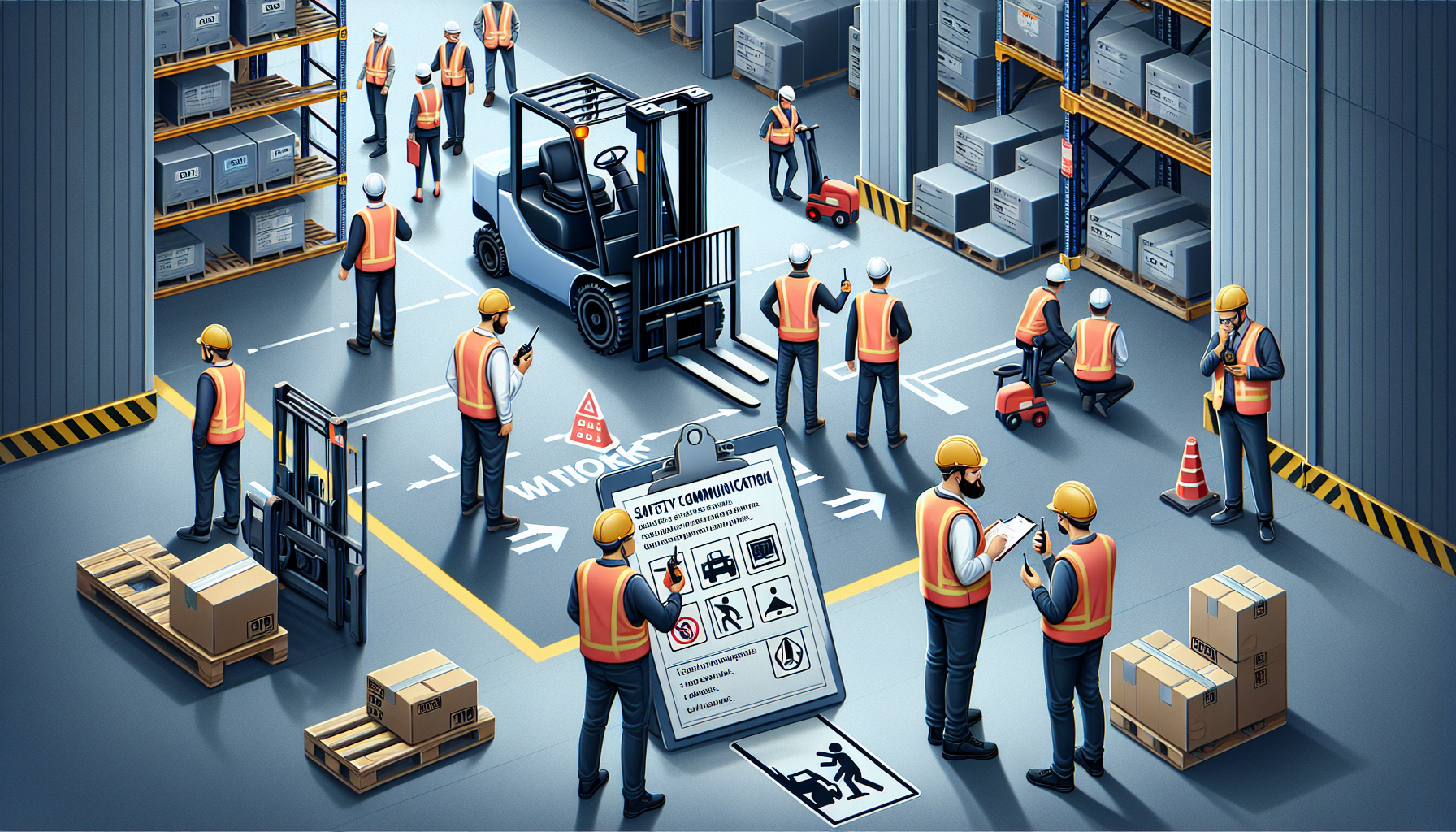Implementing a comprehensive PIT (Powered Industrial Truck) safety communication plan is crucial for any warehouse or distribution center. With the use of forklifts, pallet jacks, and other powered equipment, it is essential to establish clear guidelines and effective communication strategies to ensure the safety of employees and the efficient operation of the facility. In this article, we will explore the steps involved in implementing a PIT safety communication plan and the benefits it brings to your warehouse operations.
Step 1: Conduct a Warehouse Safety Evaluation
Before implementing any safety measures or communication plans, it is important to assess the current state of safety in your warehouse. This can be done through a comprehensive warehouse safety evaluation. This evaluation should include a thorough inspection of the facility, equipment, and current safety protocols. It should identify potential hazards, areas for improvement, and any gaps in communication.
Engage with a trusted warehouse optimization solutions provider like HCO Innovations for a professional warehouse safety evaluation. Their team of experts will conduct a detailed assessment of your warehouse, including reviewing your existing safety programs and protocols. This evaluation will give you a clear picture of where your warehouse stands in terms of safety and help you identify areas that need improvement.
Step 2: Develop Clear and Concise Safety Policies
Once you have assessed the safety status of your warehouse, the next step is to develop clear and concise safety policies. These policies should outline the expectations and procedures related to powered industrial trucks. They should cover topics such as equipment operation, traffic management, pedestrian safety, and maintenance protocols.
HCO Innovations can assist you in developing customized safety policies specific to your warehouse operations. They have extensive experience in warehouse optimization and safety measures, ensuring that the policies developed adhere to industry best practices and compliance standards. Implementing these policies will help establish a strong foundation for your PIT safety communication plan.
Step 3: Train Employees on Safety Procedures
Training employees on safety procedures is a critical aspect of any PIT safety communication plan. It is important to ensure that all employees operating or working around powered industrial trucks are well-trained in safe practices and protocols. This includes forklift operators, warehouse staff, supervisors, and even visitors who may be present in the warehouse.
By conducting comprehensive safety training programs, you can educate employees about the potential risks associated with PIT operations and empower them with the knowledge to mitigate those risks. HCO Innovations offers customized training programs that can be tailored to your specific warehouse requirements. Their training sessions cover topics such as equipment operation, load handling, maneuvering in tight spaces, and emergency procedures.
Step 4: Establish Clear Communication Channels
Effective communication is vital in maintaining a safe warehouse environment. Establishing clear communication channels ensures that employees can report safety concerns, hazards, or incidents promptly. It also enables supervisors and management to effectively communicate important safety-related information to the workforce.
Consider implementing tools such as safety suggestion boxes, incident reporting forms, and regular safety meetings to facilitate communication within your warehouse. HCO Innovations can assist you in setting up these channels and provide guidance on how to encourage employee participation and engagement in reporting safety-related issues.
Step 5: Regularly Evaluate and Update Safety Communication Plan
Safety is an ever-evolving process, and it is crucial to regularly evaluate and update your PIT safety communication plan. This includes reviewing and revising safety policies, training programs, and communication channels based on feedback, incident reports, and emerging best practices.
HCO Innovations provides ongoing support and consultation to ensure that your safety communication plan remains effective and up-to-date. By partnering with their team of experts, you can stay informed about the latest advancements in warehouse safety and make necessary adjustments to your plan.
In conclusion, implementing a PIT safety communication plan is imperative to create a safer work environment and optimize warehouse operations. By following the steps outlined in this article, conducting a warehouse safety evaluation, developing clear safety policies, training employees, establishing communication channels, and regularly evaluating and updating your plan, you can ensure that your warehouse operates efficiently and safely.
If you’re ready to enhance the safety and productivity of your warehouse operations, contact HCO Innovations to schedule a warehouse safety evaluation today!

